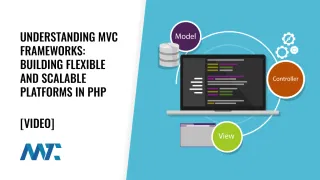A software design pattern that divides an application into three interconnected components. Think of it like a restaurant: the kitchen (Model) prepares the food, the plate presentation (View) is how the food looks to customers, and the waiter (Controller) takes orders and coordinates between the kitchen and customers.
MVC organizes code in a way that separates concerns and makes applications easier to develop, maintain, and scale. This separation means that developers can work on different parts of the application without interfering with each other—the database team can modify the Model while the design team updates the View.
MVC Example
Here’s how MVC works in a simple blog application:
- Model: Handles data and business logic
class BlogPost:
def get_all_posts():
return database.query("SELECT * FROM posts")- View: Displays information to users
<div class="blog-post">
<h1>{{post.title}}</h1>
<p>{{post.content}}</p>
</div>- Controller: Processes user input and coordinates between Model and View
class BlogController:
def show_post(post_id):
post = BlogPost.get_post(post_id)
return render_view("post.html", post=post)MVC is commonly used in web frameworks like Ruby on Rails, Django, and ASP.NET MVC, where this clear separation helps manage complex applications.
